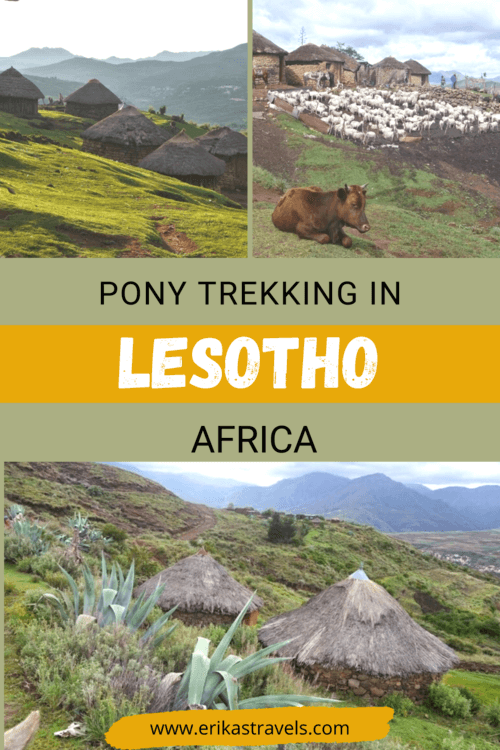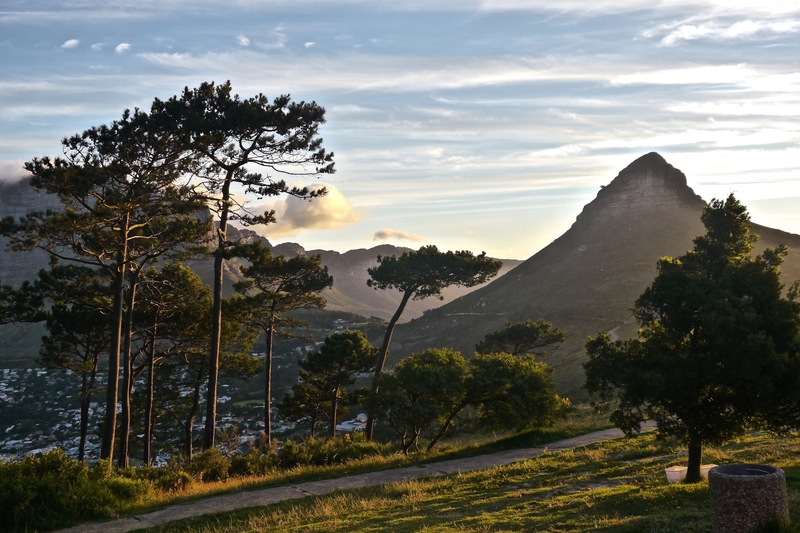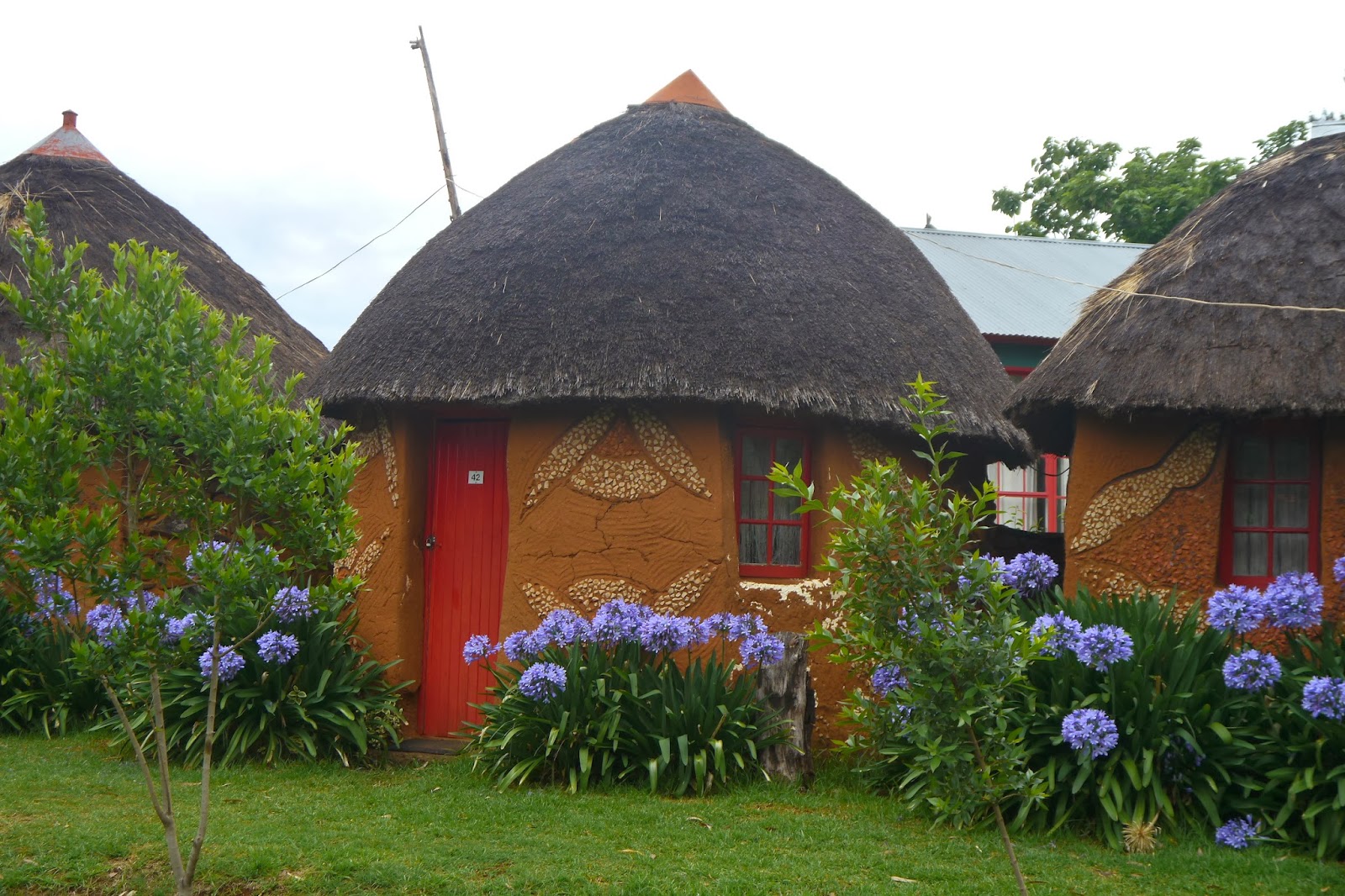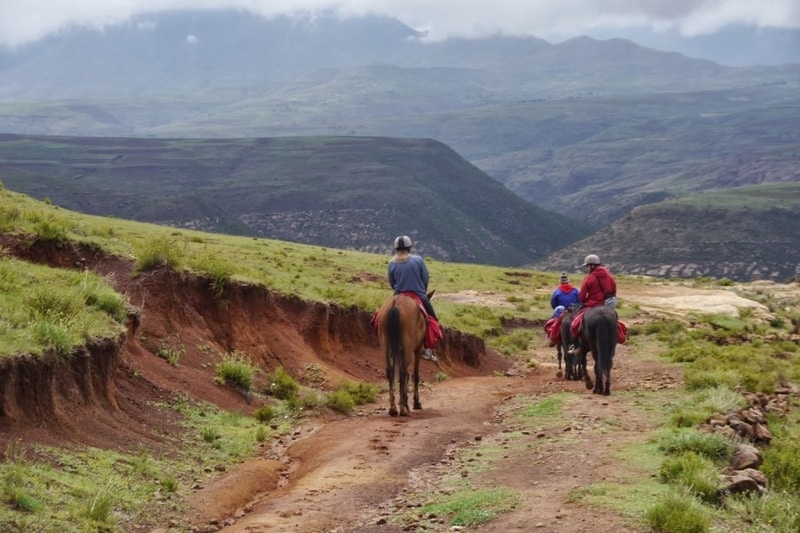
Pony Trekking in Lesotho: Malealea to Ribaneng Village
“Ummm….are we going to try to go down that on our ponies?” I heard Mariella ask our guide as my horse pulled up to the edge of a canyon.
I looked at the road in front of me—at the loose scree, the vertical slope and the twisting path. “I hope not” the voice inside my head replied.
Our guide dismissed our fears and assured us we would be okay. Lesotho’s ponies are meant for this kind of terrain, he assured us.
Lesotho Pony Trekking
The sure-footed Basotho ponies have adapted miraculously to Lesotho’s mountainous terrain. For centuries, the Basotho people have relied on this unique breed of horse as their primary means of transportation.
Today, inaccessible terrain, coupled with Lesotho’s poverty, have resulted in a sparse network of roads and many communities that lay a long ways off the infrastructure grid. As a result, to reach many of the smaller villages, one can only follow footpaths that wind through valleys and around mountain peaks.
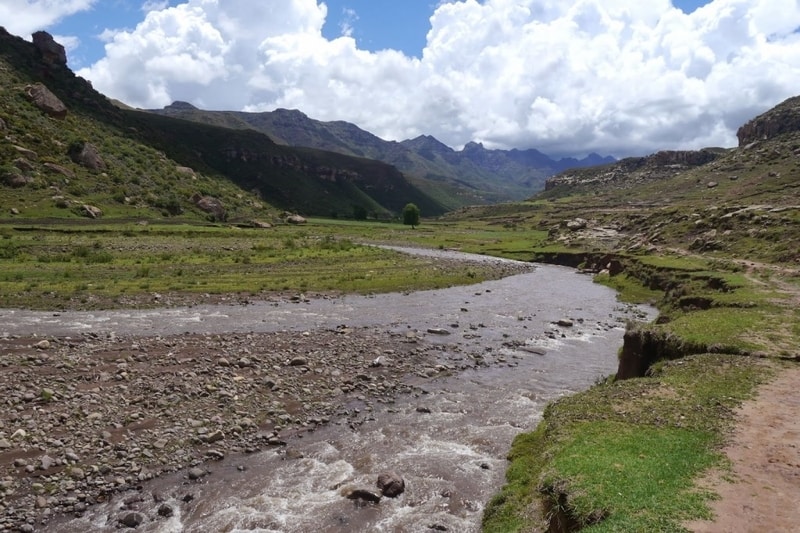
Since Lesotho is a largely rural country and many people live away from the main arteries of infrastructure, horseback riding remains the preferred method of transportation for many people. For us, horse riding in Lesotho proved to be a memorable way of soaking in the Drakensberg Mountain scenery.
Exploring Lesotho on Horseback is the best way to experience Africa‘s Kingdom in the Sky. By riding horses along the narrow paths that weave through the Drakensberg Mountains, we were able to see landscapes and villages that are largely inaccessible by car.
Our Pony Trek from Malealea Lodge to Ribaneng
Despite the uneven mountainous terrain, our Basotho ponies were sure-footed and confident.
On numerous times during our overnight trek from Malealea to Ribaneng, we had to put our trust in our horse. Throughout the entire two days, there were many instances in which we would look at our guide incredulously and ask, “are we really going to go there on horseback?”
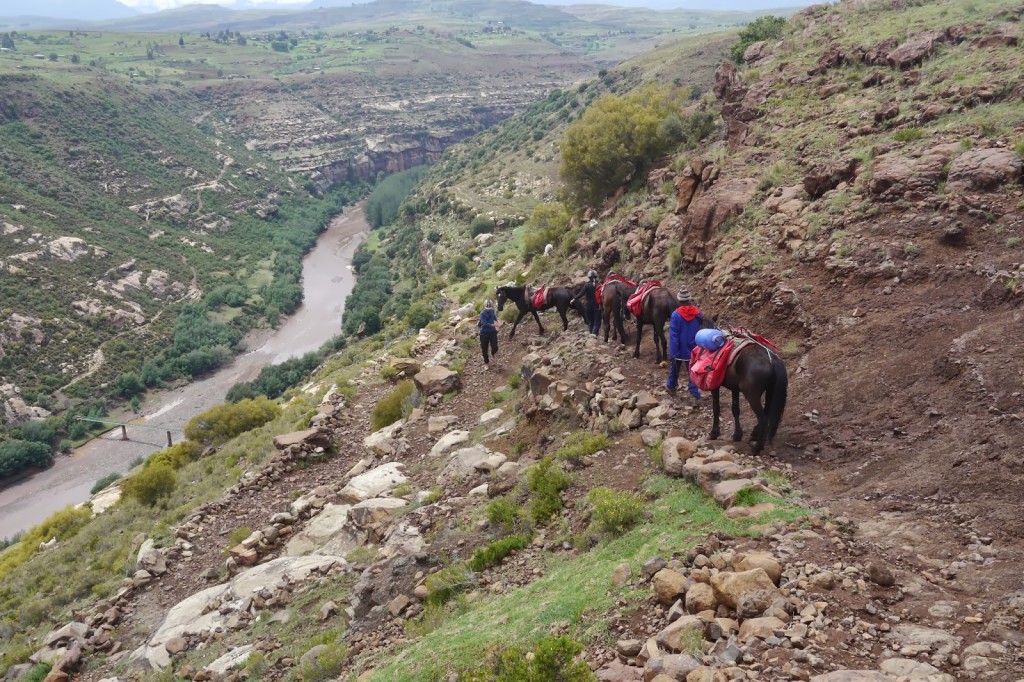
One such instance occurred on our first day of riding, shortly after we got back on our horses following the descent into the canyon. When we reached the bottom, our guide told that we would need to ford a river.
The river was not merely a tiny mountain stream that our ponies would be able to gallop across. No, it was a murky brown ribbon of water that the horses would be required to wade through–despite the current–before reaching the other side.
My little pony struggled against the moving water and I clutched my fancy camera tightly, hoping to shield it in the event that we tumbled downstream.
Of course, we didn’t. There is a reason that the Basotho ponies–Lesotho’s unique breed–are so highly regarded in this proud little country.
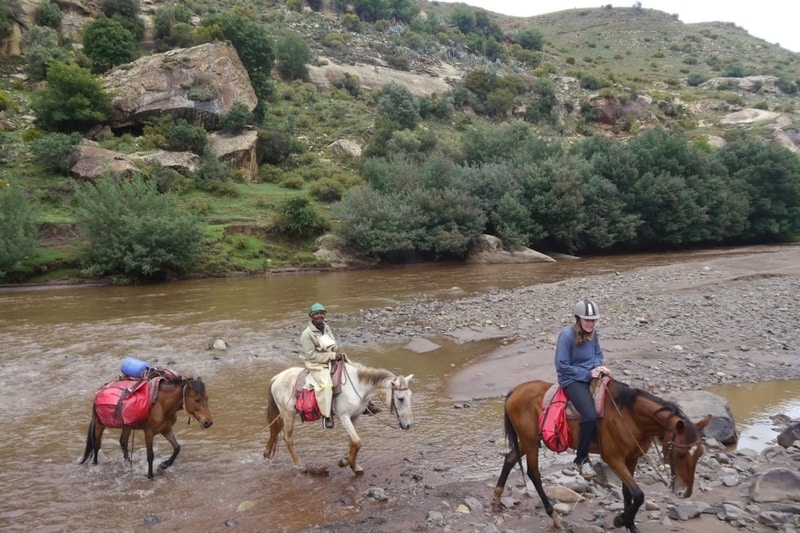
Despite the hair-raising moments we encountered on our journey, it was easy to see why the area around Malealea Lodge is best explored on horseback and why these horses are so highly touted in Basotho culture. It simply would have been impossible to cover so much ground on our own two feet and taking a car was completely out of the question, since there are no roads linking the smaller villages throughout the country.
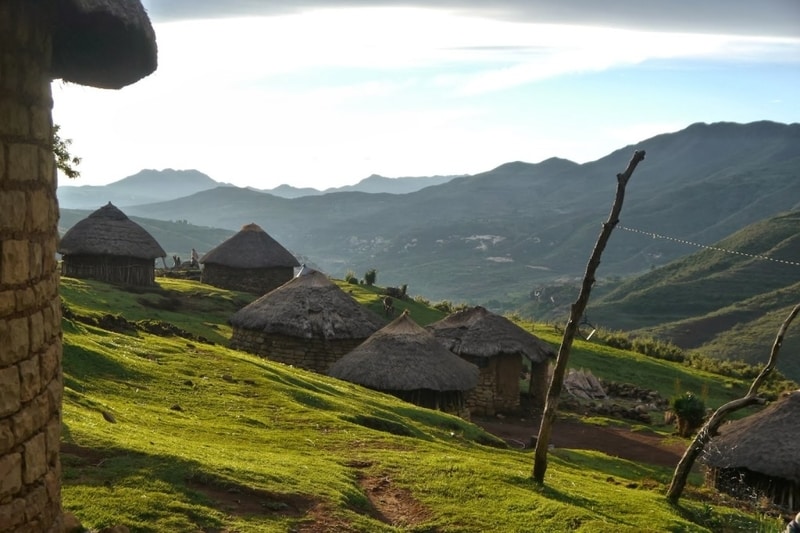
As we led our horses through the mountains, we found ourselves admiring picture-perfect postcard scenes at every bend. We passed children running toward us yelling “bye bye” and waving emphatically. We greeted blanket-clad sheepherders who trudged up and down the mountains in their rubber boots and tried to ensure that all of their livestock was accounted for. We trotted through idyllic villages, where no cars or remnants of modern technology mar the landscape.
I had the strange sensation that I was traveling back in time.
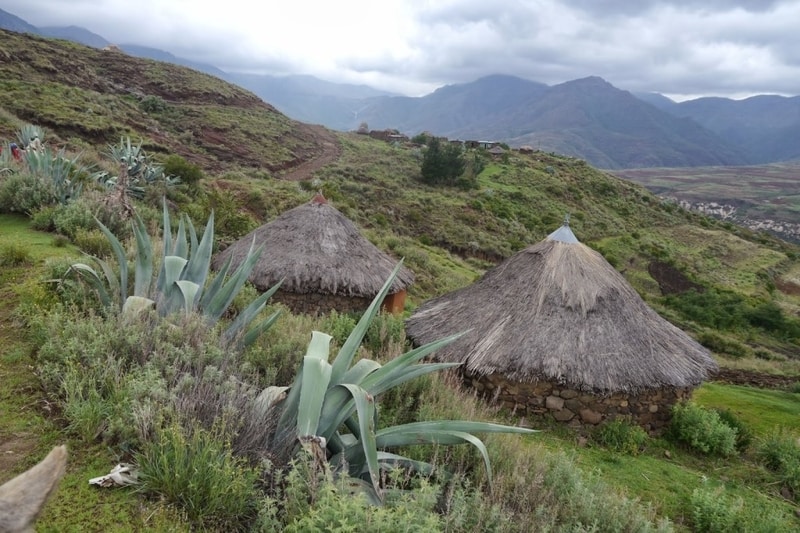
Each village we passed seemed more picturesque than the last and each vista was so awe-inspiring, that I didn’t notice just how sore my bottom was until we reached Ribaneng Village—our final destination.
-
Ribaneng Village Lesotho
Ribaneng is a tiny village perched halfway up a mountain. The village consists of a small cluster of round, stone huts called rondavels, a sheep corral and a surprisingly clean pit toilet for overnight visitors. It overlooks a valley and is only a few kilometers away from the lovely Ribaneng waterfall.
Our tour included accommodation in a basic Basotho hut. Travelers seeking a slightly less ‘rustic’ experience have the option of staying at the Ribaneng Lodge.
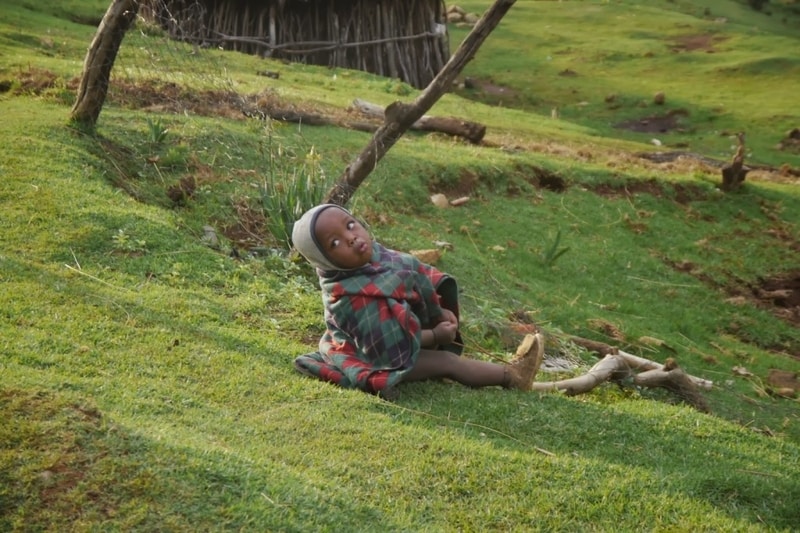
In the evening, we cooked a generous portion of bland spaghetti by torchlight, chatted with a wonderful Belgian couple who had joined us for the first day of the trek and absorbed our surroundings, as the setting sun finally emerged from behind the clouds and blanketed the countryside with a sun-drenched glow.
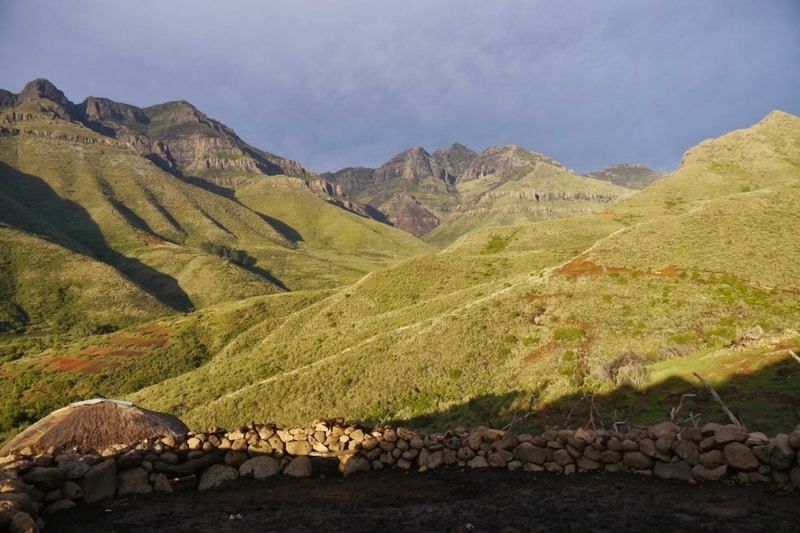
Mariella and I opted out of hiking to the falls that afternoon and, instead, decided to spend the rest of our day exploring the village. We played various games of peek-a-boo with the charismatic village baby, watched the sheep herders scamper up mountains with remarkable agility and witnessed village life unfold before our eyes.
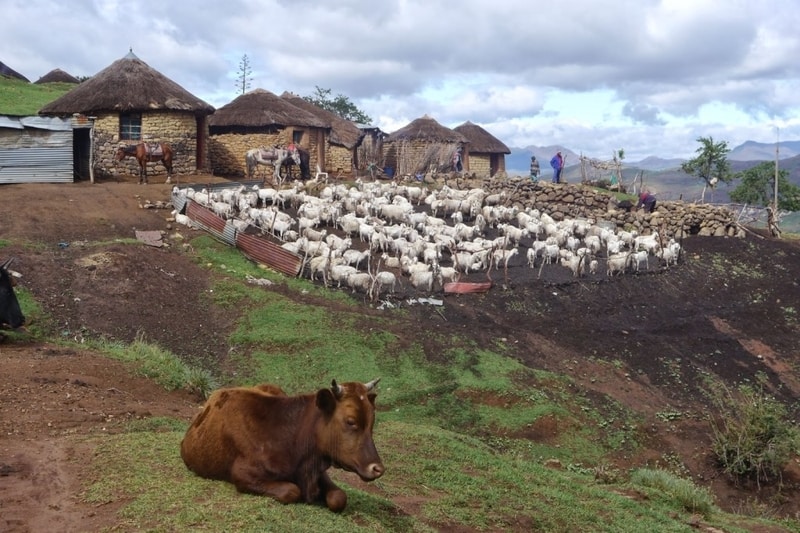
The next morning, we woke up at sunrise for an early hike to the waterfall. The hike was about two miles long and afforded us breathtaking views of Ribaneng village and the surrounding mountains.
-
Ribaneng Waterfall
The path to the waterfall wound down the mountainside to the river. Once we reached the bottom, our guide advised us to take off our shoes and stash them behind a bush so that we could wade through the river toward the base of the falls.
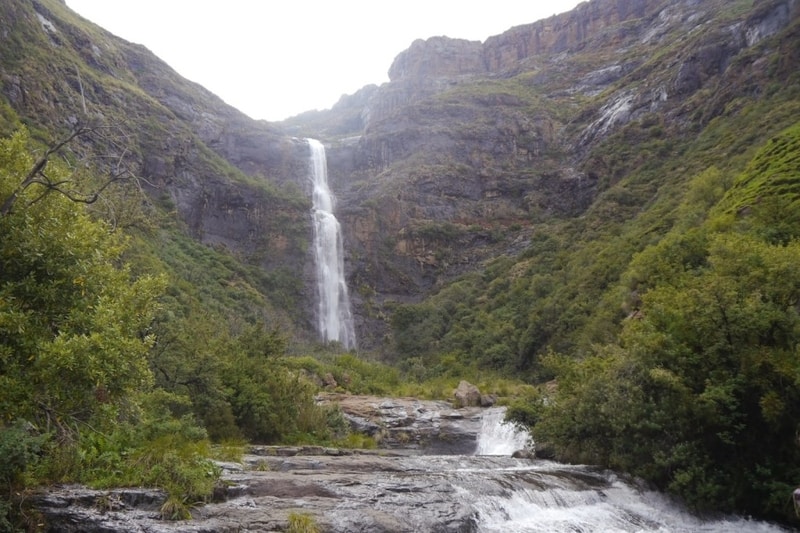
The water was frigid and sent daggers flying through my body. I was not accustomed to such icy temperatures–not after spending a year in one of the world’s hottest countries.
Mariella and I navigated the slippery rocks at the base of the waterfall with numb feet and relished the views. It felt incredible to have such a beautiful spot completely to ourselves. There were no hoards of camera-toting tourists talking loudly or complaining about the lack of WiFi or cell reception. It was just us and nature. And the occasional goat or sheep that ran in and out of the scene.
Yet as pleasant as the journey was, when our horses finally galloped through the gates of the lodge after a second long day of trekking, we were ready to be back. As a result of our decision, we spent the rest of the day and the next hiking to the Paradise Pass, mingling with fellow travelers and feasting on carrot-cake and amarula milkshakes—a blissful end to a wonderful five days in the Mountain Kingdom.
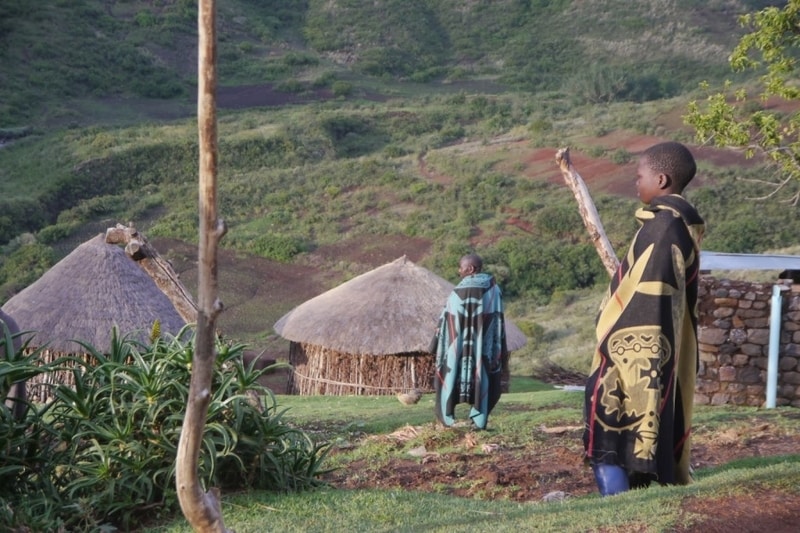
We had debated tacking on another day to the trek, since it would have been nice to explore remote villages further afield, but Mariella and I were more than satisfied with our decision to spend our last day around the lodge instead.
I think our sore bums were thankful, too.
________________________________
Like this Blog Post on Pony Trekking in Lesotho? Pin It!
